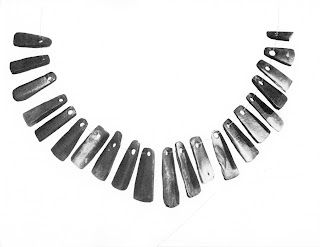Hunt panel, 9-Mile Canyon, Utah.
Photo: Peter Faris, 1985.
On April 17, 1987, I presented a paper at the Rock Art in the Western United States symposium at the Denver Museum of Natural History, co-sponsored by the museum and by the Colorado Archaeological Society. My presentation was titled Aspects of Design in Uintah and San Rafael Fremont Rock Art. In this I focused on analyzing rock art in terms of traditional design concepts in western art. Note that I was discussing rock art that predates any possible contact between cultures. In this I was postulating that preference for certain proportions and ratios are apparently hard-wired into the human brain. One of the design elements that I discussed on that occasion was the golden ratio (AKA: golden mean/golden section).
The golden ratio was of great interest to early mathematicians and has been used intentionally at least since the Renaissance by western artists as a basis for composition. Simply speaking, the golden ratio is a means of subdividing a line or an area in such a way that the ratio of the smaller portion to the larger is the same as ratio of the larger portion to the total. According to Wikipedia “two quantities are in the golden ratio if the ratio of the sum of the quantities to the larger quantity is equal to the ratio of the larger quantity to the smaller one. The golden ratio is an irrational mathematical constant, approximately 1.6180339887.”
In 1945, Max Raphael wrote in Prehistoric Cave Paintings that “The first surprise of the spectator who takes measurements is not that he finds proportions in all these lines and surfaces, but that these proportions – largely independent of the various animal species represented – can be reduced to a few recurrent types such as 1:1, 1:2, 2:3, 2:5, 3:5, 3:4, 3:7 and 4:7. The first two require no explanation because they can be achieved with any scale. The next three form the homogeneous group 2:3 = 3:5 which is known as the golden section” (p.28).
Raphael believed that early man had become aware of this ratio by noticing natural relationships of the digits of the human hand. His candidate for this relationship was the that the ratio of the width of the 4th and 5th fingers on one hand compared to the width of the thumb plus the 1st and 2nd fingers closely approximates the ratio of the width of the thumb plus the 1st and 2nd fingers to the width of all five fingers. Raphael also found the golden section in the body proportions of many of the animals portrayed in cave paintings.
Golden ratio proportions drawn on photo,
Hunt panel, 9-Mile Canyon, Utah.
Photo: Peter Faris, 1985.
The example that I presented for the golden ratio is the famous hunting panel from 9-Mile Canyon in northeastern Utah. In examining this petroglyph panel we first recognize that there are elements from more than one culture included and my analysis was focused on the original Fremont composition. It is obvious that the original composition composed a panel of the type that is sometimes called a “master of the animals” or “master of the hunt” composition. The classic Fremont figure on the upper center of the composition (often assume to be a hunt shaman) is surrounded by a grouping of quadrupeds which appear to be bighorns. These animals are all connected to each other and to the upper human figure by overlapping, and in some instances lines. Six or seven figures have been added later in a different style, predominately on the right side. Four of these are hunters carrying bows and were created at a later date with a more fluid and curving style by another hand and which would not have been part of the original composition. There are also shield figures which may be questioned but their presence does not change the proportions of what I take to be the original composition which consists of the upper central Fremont figure and the grouping of bighorns around him. When I focus on that, the ratio of the width to the height can be seen to be very closely comparable to the golden ratio. I believe that this was probably done subconsciously by the original Fremont artist. These proportions just “felt right” to the creator of the panel. Later figures were probably added to share the supposed spiritual power possessed by the panel. I believe that this ratio represents one of the elements in rock art that is not generally intentional, but comes from a common inherited, subconscious, human sensitivity to that ratio which is hard-wired into the human brain, possibly as a relic of our primate brain’s need to judge distances and proportions in the branches of the trees that housed our early ancestors.
This points toward at least one element that can be recognized in rock art that is attributable to our common humanity rather than cultural influences or stylistic choices, but I believe there are many other such elements.
REFERENCE:
Raphael, Max
1945
Prehistoric Cave Paintings, Pantheon Books, Washington D.C.









